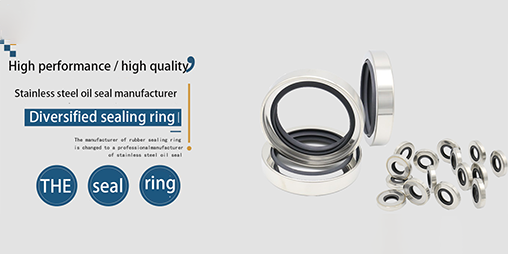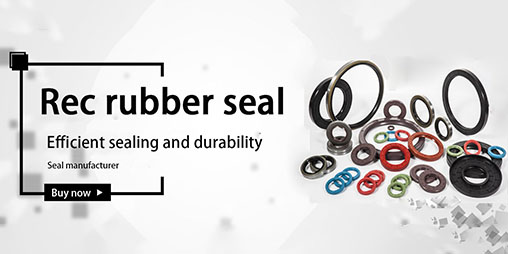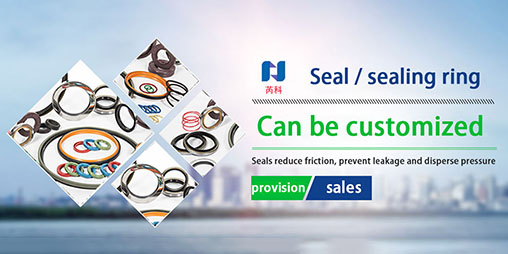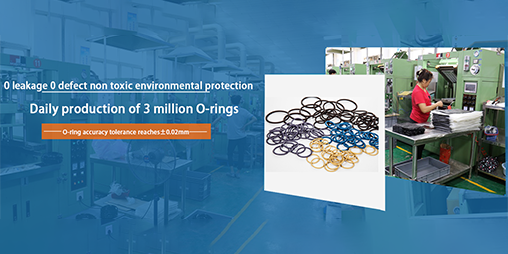EPDM is a terpolymer of ethylene, propylene and non conjugated dienes. Dienes have a special structure, only one of the two bonds can copolymerize, and the unsaturated double bond is mainly used as the cross chain. The other unsaturated will not become the main chain of the polymer, but only the side chain. The main polymer chain of EPDM is completely saturated. This property makes EPDM resistant to heat, light, oxygen, especially ozone. EPDM is essentially nonpolar, resistant to polar solutions and chemicals, low water absorption and good insulation characteristics.
In the production of EPDM, its characteristics can be adjusted by changing the number of monomers, ethylene propylene ratio, molecular weight and its distribution and vulcanization.
Selection of the third monomer of EPDM
The monomer of the third olefin type is unsaturated in the polymer through the copolymerization of ethylene and propylene, so as to realize vulcanization. Third, the selection of monomer must meet the following requirements:
Up to two bonds: one polymerizable and one vulcanizable
The reaction is similar to two basic monomers
Random aggregation of primary keys produces uniform distribution
Sufficient volatility to facilitate removal from the polymer
The final polymer vulcanization rate is appropriate
At present, the third monomer for industrial production of EPDM is only as follows:
Ethylidene norbornene (ENB)
Dicyclopentadiene (DCPD)
1,4-hexadiene (hd)
CH3-CH=CH-CH2-CH=CH2
(at present, this monomer is only used by Du Pont company in the United States)
Effect of diene type and content on polymer properties
ENB and DCPD are mainly used in the production of EPDM.
The most widely used EPDM is ENB, which vulcanizes much faster than DCPD products. Under the same polymerization conditions, the nature of the third monomer affects the long-chain branching, increasing in the following order: EPM < EPDM (ENB) < EPDM (DCPD)
Ethylene propylene diene and other affected by the third diene monomer:
ENB rapid vulcanization, high tensile strength, low permanent deformation
DCPD anti scorch, low permanent strain, low cost
With the increase of diene third monomer, the following effects will occur: faster vulcanization rate, lower compression deformation, high setting, diversity of accelerator selection, reduced anti coking and ductility, and higher polymer cost.
Ethylene propylene ratio
The ethylene propylene ratio can be changed during the vulcanization stage, and the ethylene propylene ratio of commercial EPDM polymers ranges from 80 / 20 to 50 / 50. When the ethylene propylene ratio changes from 50 / 50 to 80 / 20, the positive effects are: higher blank strength, higher tensile strength, higher crystallization, lower glass conversion temperature, conversion of raw material polymers into pellets, and better extrusion characteristics. The bad effects are poor calendering mixing, poor low temperature characteristics, and poor compression deformation.
When the propylene ratio is higher, the benefits are better processability, better low temperature characteristics and better compression deformation.
Molecular weight and molecular weight distribution
The molecular weight of elastomer is usually expressed by Mooney viscosity. In the Mooney viscosity of EPDM, these values are obtained at high temperature, usually 125 ℃. The main reason for this is to eliminate any effect (crystallization) caused by high ethylene content, which will mask the real molecular weight of the polymer. The Mooney viscosity of EPDM ranges from 20 to 100. Commercial EPDM with higher molecular weight is also produced, but it is generally filled with oil for mixing.
The molecular weight and its distribution in EPDM can be polymerized in the polymerization process by the following ways:
Type and concentration of catalyst and cocatalyst
temperature
Concentration of modifiers such as hydrogen
The molecular weight distribution of three ethylene propylene can be measured by gel permeation chromatography using two chlorobenzene as solvent at high temperature (150 degree). The molecular weight distribution is often referred to as the ratio of weight average molecular weight to quantity average molecular weight. This value varies between 2 and 5 depending on the normal and highly branched structure. EPDM containing DCPD has a wider molecular weight distribution due to the partial bond.
By increasing the molecular weight of EPDM, the positive effects are: higher tensile and tear strength, higher green strength at high temperature, and the ability to absorb more oil and filler (low cost). With the increase of molecular weight distribution, the positive effects are: increased mixing and milling processability. However, a narrow molecular weight distribution can improve the vulcanization rate, vulcanization state and injection molding behavior。
EPDM can be vulcanized with organic peroxide or sulfur. However, compared with sulfur vulcanization, peroxide crosslinked EPDM has higher temperature resistance, lower compression deformation and improved vulcanization characteristics when used in wire and cable industry. The disadvantage of peroxide vulcanization lies in the higher cost.
As mentioned earlier, the cross chain speed and vulcanization time of EPDM change with the vulcanization type and content. When EPDM is mixed with butyl, natural rubber and styrene butadiene rubber, the following factors must be considered when selecting appropriate EPDM products:
When mixing with butyl, because butyl has low unsaturation, in order to adapt to the vulcanization rate of butyl, it is best to select EPDM with relatively low content of DCPD and ENB.
When mixed with natural rubber and styrene butadiene rubber, EPDM with 8% to 10% ENB content is preferred to meet its vulcanization speed.
EPDM is a kind of rubber made of ethylene and propylene by solution copolymerization, and then the third monomer (ENB) is introduced. EPDM is basically a saturated polymer with excellent aging resistance, weather resistance, electrical insulation, chemical corrosion resistance and impact elasticity. The main disadvantage of ethylene propylene rubber is its slow vulcanization speed; It is difficult to use with other unsaturated rubber, and the self-adhesive and mutual adhesive are very poor, so the processing performance is not good.
According to the performance characteristics of ethylene propylene rubber, it is mainly used in several fields requiring aging resistance, water resistance, corrosion resistance and electrical insulation, such as light color sidewall of tire, heat-resistant transport belt, cable, wire, anti-corrosion lining, sealing gasket, building waterproof sheet, door and window sealing strip, household appliance accessories, plastic modification, etc. Properties and applications of ethylene propylene rubber.
Ethylene propylene rubber is synthesized with ethylene and propylene as the main raw materials, with outstanding aging resistance, electrical insulation and ozone resistance. Ethylene propylene rubber can be filled with a large amount of oil and carbon black. The product price is low. Ethylene propylene rubber has good chemical stability, and its wear resistance, elasticity and oil resistance are close to that of styrene butadiene rubber. Ethylene propylene rubber has a wide range of uses. It can be used as tire side, rubber strip, inner tube and auto parts. It can also be used as wire, cable sheath and high-voltage and ultra-high-voltage insulation materials. It can also manufacture light color products such as shoes and sanitary products. Performance and improvement of ethylene propylene rubber:
1、 1. Low density and high filling
Ethylene propylene rubber is a kind of rubber with lower density, and its density is 0.87. In addition, a large amount of oil can be filled and fillers can be added, which can reduce the cost of rubber products and make up for the disadvantage of high price of raw EPDM rubber. For EPDM with high Mooney value, the reduction of physical and mechanical energy after high filling is not large.
2. Aging resistance
Ethylene propylene rubber has excellent weather resistance, ozone resistance, heat resistance, acid and alkali resistance, steam resistance, color stability, electrical performance, oil filling and room temperature fluidity. Ethylene propylene rubber products can be used for a long time at 120 ℃ and temporarily or intermittently at 150 - 200 ℃. The use temperature can be increased by adding appropriate antioxidant. EPDM crosslinked with peroxide can be used under harsh conditions. EPDM can not crack for more than 150h under the condition of ozone concentration of 50pphm and stretching of 30%.
3. Corrosion resistance
Due to the lack of polarity and low unsaturation of ethylene propylene rubber, it has good resistance to various polar chemicals such as alcohol, acid, alkali, oxidant, refrigerant, detergent, animal and vegetable oil, ketone and grease; However, it has poor stability in aliphatic and aromatic solvents (such as gasoline, benzene, etc.) and mineral oil. The performance will also decline under the long-term action of concentrated acid. ISO / to 7620 collects data on the effects of nearly 400 corrosive gaseous and liquid chemicals on various rubber properties, and specifies grades 1-4 to indicate the degree of action. The impact of corrosive chemicals on rubber properties:
Effect of grade volume swelling rate /% hardness reduction on properties
1 < 10 < 10 slight or none
2 10-20 < 20 smaller
3 30-60 < 30 medium
4 > 60 > 30 severe
4. Water vapor resistance
Ethylene propylene rubber has excellent water vapor resistance and is estimated to be better than its heat resistance. In 230 ℃ superheated steam, the appearance does not change after nearly 100h. Under the same conditions, the appearance of fluororubber, silicone rubber, fluorosilicone rubber, butyl rubber, nitrile rubber and natural rubber deteriorated significantly in a short time.
5. Superheat water resistance
Ethylene propylene rubber also has good resistance to superheat water, but it is closely related to all vulcanization systems. After soaking in 125 ℃ superheated water for 15 months, the mechanical properties of ethylene propylene rubber with dimorpholine disulfide and TMTD as vulcanization system changed very little, and the volume expansion rate was only 0.3%.
6. Electrical properties
EPDM has excellent electrical insulation and corona resistance, and its electrical properties are better than or close to styrene butadiene rubber, chlorosulfonated polyethylene, polyethylene and cross-linked polyethylene.
7. Flexibility
Because there are no polar substituents in the molecular structure of ethylene propylene rubber, the molecular cohesion energy is low, and the molecular chain can maintain flexibility in a wide range, which is second only to natural rubber and CIS polybutadiene rubber, and can still maintain at low temperature.
8. Adhesion
Due to the lack of active groups in the molecular structure, the cohesion energy of ethylene propylene rubber is low. In addition, the rubber is easy to spray frost, and the self-adhesive and mutual adhesive are very poor.
2、 Ethylene propylene rubber modified varieties
Since the successful development of EPDM and EPDM in the late 1950s and early 1960s, a variety of modified EPDM and thermoplastic EPDM (such as EPDM / PE) have appeared in the world, which provides many varieties and grades for the wide application of EPDM. Modified EPDM is mainly brominated, chlorinated, sulfonated, maleated, maleated, silicone modified, nylon modified, etc. Ethylene propylene rubber is also grafted with acrylonitrile, acrylate, etc. Over the years, many polymer materials with good comprehensive properties have been obtained by means of blending, copolymerization, filling, grafting, reinforcement and molecular composite. Through modification, the properties of ethylene propylene rubber have also been greatly improved, which expands the application range of ethylene propylene rubber.
Brominated ethylene propylene rubber is processed by brominating agent on the open mill. Brominated EPDM can improve its vulcanization speed and adhesion, but its mechanical strength decreases. Therefore, brominated EPDM is only suitable for the intermediate layer between EPDM and other rubbers.
Chlorinated ethylene propylene rubber is made by passing chlorine through EPDM solution. Chlorination of ethylene propylene rubber can improve the vulcanization speed, compatibility with unsaturated, flame resistance, oil resistance and adhesion.
Sulfonated EPDM is prepared by dissolving EPDM in solvent and treating it with sulfonating agent and neutralizer. Sulfonated ethylene propylene rubber will be widely used in adhesives, coated fabrics, building waterproof lean meat, anti-corrosion lining and so on.
Acrylonitrile grafted ethylene propylene rubber was grafted with acrylonitrile at 80 ℃ with toluene as solvent and benzyl chloride as initiator. Acrylonitrile modified EPDM not only retains the corrosion resistance of EPDM, but also obtains the oil resistance equivalent to nitrile-26, with good physical, mechanical and processing properties.
Thermoplastic ethylene propylene rubber (EPDM / PP) is mixed with polypropylene based on ethylene propylene diene monomer. At the same time, the product can make ethylene propylene rubber reach the expected crosslinking degree. It not only retains the inherent characteristics of ethylene propylene rubber, but also has significant process properties of injection, extrusion, blow molding and calendering of thermoplastic.
In addition, modified EPDM also includes chlorosulfonated EPDM, acrylate grafted EPDM and so on.










